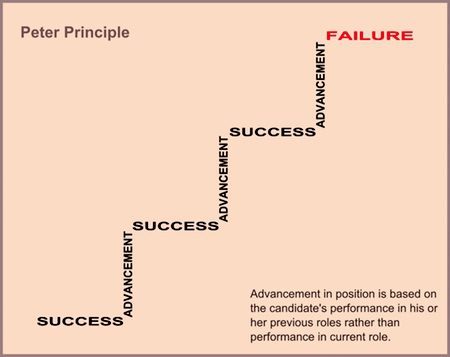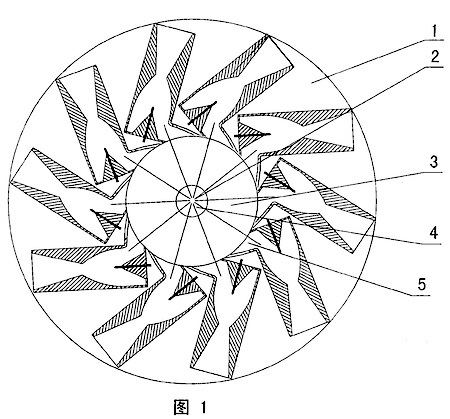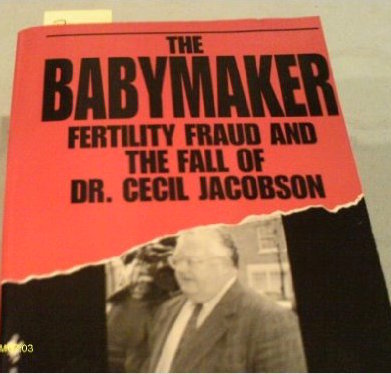Marc Abrahams's Blog, page 251
September 15, 2016
The Visual Aesthetics of Snowflakes (new study)
Given a selection of snowflakes – some with simple structures and others more complex – which do people prefer? To find out, Olivia C. Adkins, who is a Graduate Research Assistant at Western Kentucky University, US, and J. Farley Norman, University Distinguished Professor, also at Western Kentucky University, devised at set of experiments. They showed silhouettes created from photographs of natural snowflakes (and a selection of computer-generated solid objects) to over 200 participants – who were asked to choose the most aesthetically pleasing examples.
For the solid objects, the results were mixed – some preferring the simpler shapes and others the complex ones, but with the flakes the results were striking:
“91% of participants perceived only the complex snowflakes as being most beautiful.”
The Visual Aesthetics of Snowflakes is scheduled for publication in a future print issue of the journal Perception.
Note: The experimental work was carried out in accordance with the Code of Ethics of the World Medical Association (Declaration of Helsinki).
Also see: Falling Snowflakes: vertical or horizontal?

September 14, 2016
Podcast 81: “The Best Life — Act 2 (of 3)” — A scientific mini-opera where everything goes wrong.
Act 2 of the 3-act mini-opera “The Best Life”, about about a competition to choose the best species of life — that’s this week’s Improbable Research podcast.
SUBSCRIBE on Play.it, iTunes, or Spotify to get a new episode every week, free.
This week, Marc Abrahams introduces Act 2 of the mini-opera “The Best Life,” which premiered as part of the 2015 Ig Nobel Prize Ceremony, at Harvard’s Sanders Theatre. This is a recording from that performance:
The plot of Act 2: [As you’ll hear the narrator, Karen Hopkin, explain:] It’s the day before the contest. It’s the REHEARSAL for the contest. And it’s a GREAT day — a HISTORIC day! Here, today — now!— for the first time, ever, ALL the species of life are gathered together IN THE SAME ROOM. This room! Look around you. There are so many species you can’t even count them. At least TEN MILLION species. Maybe more. Let’s join the two contest organizers, as they take attendance of all the competitors. Of course, this is all about to go very, very wrong. But the organizers don’t realize that. Oh, they will! In this room we have EVERY PREDATOR species, and EVERY PREY species, and everything that eats, and everything that gets eaten, and… Well, nature is going to take its course. Good luck to us all.
The libretto: The entire libretto is included in IgBill, the printed program that was handed out to all 1100 people who attended that performance. You can download your own copy of IgBill, and read along as you hear the singers sing and the instrumentalists do whatever it is they are doing.
The creators/producers: The music is by Giuseppe Verdi and Arthur Sullivan, the story and words by Marc Abrahams. The performance was directed by Maria Ferrante, assisted by Robin Abrahams, and costumed by Catherine Quick Spingler.
The performers: starring Maria Ferrante, Scott Taylor, and Daniel Rosenberg,
with The All-Species Chorus — Delphine Gabbay (chorus wrangler), Erika Hutchinson, Sylvia Rosenberg, Julia Lunetta, Vicki Bloom, Ros (Rosalind) Reid, Natasha Rosenberg, Abby Schiff, Vijaya Sundaram, Rob Hart, Liz Oppenheim, Warren Senders, Ted Sharpe, Nick Carstoiu, et al. The chorus ranks were swelled, in Act 3 of the opera, by addition of Nobel laureates Dudley Herschbach (chemistry, 1986), Carol Greider (physiology or medicine, 2009), Frank Wilczek (physics, 2004), Jack Szostak (physiology or medicine, 2009), and Eric Maskin (economics, 2007). The singers were backed by the Concentrated Forces of Nature, a distilled orchestra composed entirely of Harvard Medical School researchers Patrick Yacono and Dr. Thomas Michel.
Libretto plus: The libretto also appears, with photos from opera and juicy details from the entire the Ig Nobel ceremony, in the special 2015 Ig Nobel issue of our magazine, the Annals of Improbable Research. Here’s a photo (by ace photographer David Holzman) from Act 2:
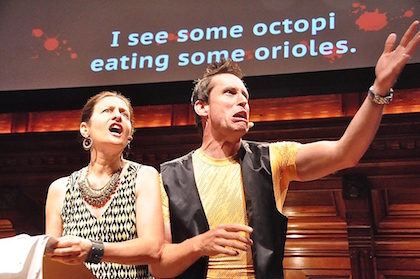
The mysterious John Schedler or the shadowy Bruce Petschek perhaps did the sound engineering this week.
The Improbable Research podcast is all about research that makes people LAUGH, then THINK — real research, about anything and everything, from everywhere —research that may be good or bad, important or trivial, valuable or worthless. CBS distributes it, on the CBS Play.it web site, and on iTunes and Spotify).

The physics of The Peter Principle; the trumping power of the Dunning-Kruger Effect
Italian physicist Andrea Rapisarda presents his Ig Nobel Prize-winning research about The Peter Principle, at the Ig Nobel show at the University of Oslo. The show was the first stop of the 2016 Ig Nobel EuroTour. Behold the video:
The 2010 Ig Nobel Prize for management was awarded to Alessandro Pluchino, Andrea Rapisarda, and Cesare Garofalo of the University of Catania, Italy, for demonstrating mathematically that organizations would become more efficient if they promoted people at random. That research is documented in the study “The Peter Principle Revisited: A Computational Study,” Alessandro Pluchino, Andrea Rapisarda, and Cesare Garofalo, Physica A, vol. 389, no. 3, February 2010, pp. 467-72.
The Peter Principle is related — in ways physicists have not yet explored — to the Dunning-Kruger Effect. David Dunning and Justin Kruger were awarded the 2000 Ig Nobel Prize for psychology, for their modest report, “Unskilled and Unaware of It: How Difficulties in Recognizing One’s Own Incompetence Lead to Inflated Self-Assessments.” That research is documented in the Journal of Personality and Social Psychology, vol. 77, no. 6, December 1999, pp. 1121-34.
David Dunning recently wrote a popular article called “The Psychological Quirk That Explains Why You Love Donald Trump — The popularity of the GOP front-runner can be explained by the Dunning-Kruger Effect.” Dunning begins by saying:
Many commentators have argued that Donald Trump’s dominance in the GOP presidential race can be largely explained by ignorance; his candidacy, after all, is most popular among Republican voters without college degrees. Their expertise about current affairs is too fractured and full of holes to spot that only 9 percent of Trump’s statements are “true” or “mostly” true, according to PolitiFact, whereas 57 percent are “false” or “mostly false”—the remainder being “pants on fire” untruths. Trump himself has memorably declared: “I love the poorly educated.”
But as a psychologist who has studied human behavior—including voter behavior—for decades, I think there is something deeper going on. The problem isn’t that voters are too uninformed. It is that they don’t know just how uninformed they are.

September 13, 2016
PR headline of the week: “A Nose by Any Other Name…”
The week’s Press Release Headline of the Week was issued by Cornell University: “.”
This photo shows the nose, and surrounding areas, of Professor Morten Christiansen, who did the research that led to the press release:

Chinese nuclear-reactor-and-flying-saucer invention
It is possible to build a combination nuclear reactor and flying saucer, in the view of inventor Jiubin Chen, who filed this patent application, in the year 2008:
“Nuclear reactor and flying saucer manufactured thereby,”
Chinese patent application 101162005 (A), 2008-04-16.
Inventor(s): JIUBIN CHEN.
“The invention relates to a nuclear reactor and a flying disk manufactured with the nuclear reactor. Jet devices of the nuclear reactor are distributed on a flywheel and communicated with an air inlet, a fuel pipe is arranged corresponding to the air inlet, combustion chambers are arranged in the jet devices, the center of the flywheel is provide with a flywheel shaft. The nuclear reactor is realized and the nuclear reacting is utilized at the same time, therefore nuclear fusion reaction is realized; new elements and new materials are created, energy and resource problems are solved; and the equipment is simple. The flying disk provided with the nuclear reactor can achieve vertical take-off and landing, has low cost, high speed and super velocity of light; meanwhile, the flying disk can dive into the sea, displacing submarines.”
The patent application includes this, solitary, technical drawing:

September 12, 2016
Another, post-Ig-Nobel-Prize, multi-self-donational fertility doctor, reportedly
“Fertility doctor impregnated several patients, affidavit says” says the headline on an Associated Press report. If reported affidavit is correct, this case reepeats, on a smaller scale, the achievement that won an Ig Nobel Prize for Dr. Cecil Jacobson.
The 1992 Ig Nobel Prize for biology was awarded to Dr. Cecil Jacobson, relentlessly generous sperm donor, and prolific patriarch of sperm banking, for devising a simple, single-handed method of quality control. Dr. Jacobson reportedly used his own sperm — he perhaps modestly did not inform anyone as to the source of that sperm — to impregnate many of his patients, resulting in an estimated 75 Jacobson-fathered kids. For details of Dr. Jacobson’s activities, read the book The Babymaker: Fertility Fraud and the Fall of Dr. Cecil Jacobson, by Rick Nelson]
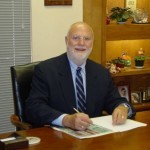 The AP report about the more recent, post-Jacobsonian case includes this passage: “A retired Indianapolis fertility doctor used his own sperm at least 50 times instead of donated sperm that his patients were expecting, impregnating at least eight women decades ago, court documents say. Dr. Donald Cline [pictured here, at right], 77, pleaded not guilty Monday to two felony obstruction of justice charges for misleading authorities who were investigating complaints from two of the now-adult children against him. Cline is accused of being the biological father of at least eight people, the youngest of which would be about 30. The accusations against him were first reported by WXIN-TV in May.”
The AP report about the more recent, post-Jacobsonian case includes this passage: “A retired Indianapolis fertility doctor used his own sperm at least 50 times instead of donated sperm that his patients were expecting, impregnating at least eight women decades ago, court documents say. Dr. Donald Cline [pictured here, at right], 77, pleaded not guilty Monday to two felony obstruction of justice charges for misleading authorities who were investigating complaints from two of the now-adult children against him. Cline is accused of being the biological father of at least eight people, the youngest of which would be about 30. The accusations against him were first reported by WXIN-TV in May.”
Further details are reported by the Indianapolis Star: “According to the probable cause affidavit, Cline told one of his biological daughters that he felt pressured to use his own sperm when he did not have access to donor sperm. In one discussion, he said he donated sperm nine or 10 times. In another discussion, he said it was more like 50 times. He told the siblings he was just trying to help people have babies and that now that he has found God, he recognizes that what he did was wrong because he hurt people.”

Unlearning – a broader picture (new study)
 The concept of ‘Unlearning’ (from an organisational point of view) was first formally described by Hedberg, Nystrom & Starbuck (we believe) more than 30 years ago in their paper ‘Camping on See-saws: Prescriptions for a Self-designing Organization’, for Administrative Science Quarterly, 21(1): 41–6. [* see note below]
The concept of ‘Unlearning’ (from an organisational point of view) was first formally described by Hedberg, Nystrom & Starbuck (we believe) more than 30 years ago in their paper ‘Camping on See-saws: Prescriptions for a Self-designing Organization’, for Administrative Science Quarterly, 21(1): 41–6. [* see note below]
However, scroll forward to 2016 for an update and expansion of the idea from Dr Cheryl Brook [pictured] and colleagues at the University of Portsmouth, UK.
“The dominant view of unlearning has it as the discarding or forgetting of obsolete or redundant knowledge.”
”We challenge this by arguing that this perspective is only part of the picture; that unlearning can also open up new possibilities for ‘not knowing’ and ‘non-action’.”
See: ‘On stopping doing those things that are not getting us to where we want to be: unlearning, wicked problems and critical action learning’ in Human Relations, February 2016 vol. 69 no. 2, pp.369-389.
* Note: According to the authors ‘Unlearning’ actually began, but was not recognized as such, as far back as 1964. See the section entitled ‘Unlearning Yesterday’.
Also see: Towards Knowledge Neutralization

September 11, 2016
Tiffany Love’s Monetary Incentives Guide to “the Love Molecule”
Love, money, and a lovably-nicknamed molecule are all in the mix — hey, they ARE the mix — in this newly published study:
 “Oxytocin modulates hemodynamic responses to monetary incentives in humans,” Brian J. Mickey, Joseph Heffernan, Curtis Heisel, Marta Peciña, David T. Hsu, Jon-Kar Zubieta, Tiffany M. Love [pictured here], Psychopharmacology, epub 2016. The authors explain:
“Oxytocin modulates hemodynamic responses to monetary incentives in humans,” Brian J. Mickey, Joseph Heffernan, Curtis Heisel, Marta Peciña, David T. Hsu, Jon-Kar Zubieta, Tiffany M. Love [pictured here], Psychopharmacology, epub 2016. The authors explain:
“Oxytocin [popularly called ‘the love molecule’] is a neuropeptide widely recognized for its role in regulating social and reproductive behavior…. Our findings demonstrate that intranasal administration of oxytocin modulates human midbrain and medial prefrontal function during motivated behavior. These findings suggest that endogenous oxytocin is a neurochemical mediator of reward behaviors in humans.”
Like many published studies, this one possibly gives you, the reader, a lovable picture of what its authors are sure might be part of the story of what happens or does not happen in nature.

Polish mine shaft math exercise
Today’s Math Estimation Exercise involves this short video. Estimate the maximum speed attained by the man as he hurtles through the mineshaft. Then estimate the precision of your estimate:
BONUS EXERCISE: Estimate how much salt was removed from the section of the salt mine visible in this video.

September 10, 2016
Choosing the most sales-y words (for some scientists)
Here’s this week’s Practical-Philosophy-for-Overambitious-Professional-Scientists topic:
Under one traditional form of academic gamesmanship, it’s all about what words someone can cram into a paper title, to induce a maximal number of guesswork interpretations by people in other fields. And by journalists.
Discuss (choosing your words carefully).
BONUS: “Number-space mapping in the newborn chick resembles humans’ mental number line“

Marc Abrahams's Blog
- Marc Abrahams's profile
- 14 followers


